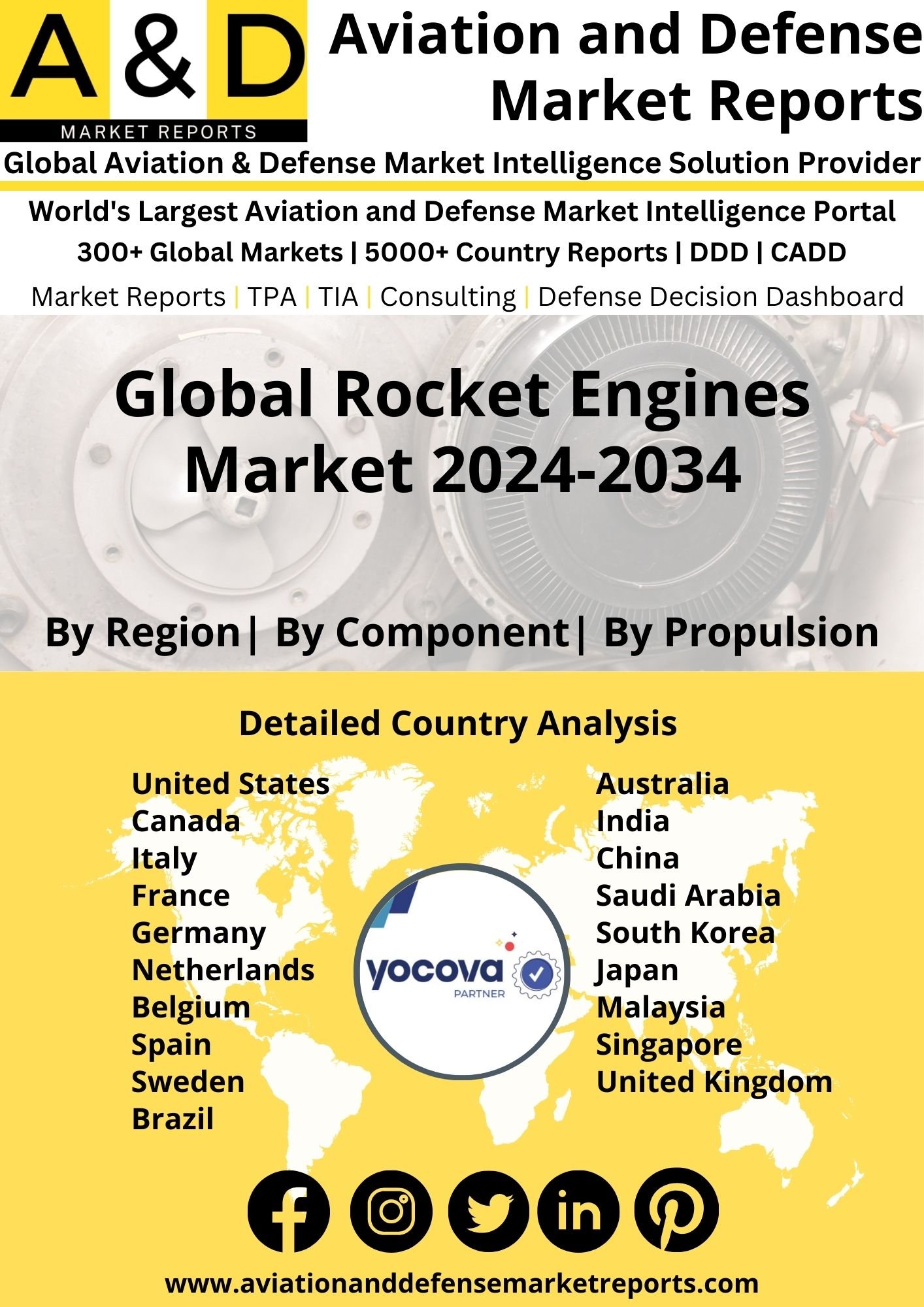Description
Rocket Engines Market
Frequently Asked Questions of Global Rocket Engines Market
Rocket engines are the propulsion systems used in rockets to generate the thrust required to overcome gravity and propel the rocket into space. They work on the principle of action and reaction, where the expulsion of high-speed exhaust gases in one direction produces a corresponding forward force on the rocket. Rocket engines generate thrust by expelling high-speed exhaust gases in one direction. This is achieved through the combustion of propellants in the combustion chamber, where the propellants mix and react to release large amounts of energy. The high-pressure gases are then accelerated through a nozzle, which converts the pressure energy into kinetic energy, resulting in high-speed exhaust gases and the generation of thrust.
Rocket engines can be designed with varying levels of thrust control, depending on the specific mission requirements. Some engines offer throttling capabilities, allowing the adjustment of thrust levels during flight. Others incorporate gimballing or vectoring mechanisms that enable the redirection of the exhaust gases to control the rocket’s attitude and trajectory. Liquid Rocket Engines use liquid propellants, typically liquid oxygen (LOX) as the oxidizer and a liquid fuel such as liquid hydrogen (LH2) or kerosene. The propellants are stored in separate tanks and mixed in the combustion chamber, where they ignite and produce thrust. Liquid rocket engines offer high performance and controllability but are more complex and require precise engineering.
Solid rocket engines use solid propellants, which are a mixture of fuel and oxidizer combined into a solid form. The propellant is ignited by an igniter, and once ignited, it burns continuously until all the propellant is consumed. Solid rocket engines are simple, reliable, and provide high thrust but lack throttle control and are not reusable. Hybrid rocket engines use a combination of liquid and solid propellants. Typically, a solid fuel grain is burned while a liquid or gaseous oxidizer is injected into the combustion chamber. Hybrid engines offer the simplicity and safety of solid rockets along with some controllability and potential reusability. Electric propulsion systems, such as ion engines and Hall effect thrusters, use electric power to accelerate charged particles (ions) to produce thrust. These engines offer high efficiency and are commonly used in long-duration space missions, where continuous low-thrust propulsion is required.
Major factors driving Rocket Engine Market Growth
The growing commercial space industry, driven by companies like SpaceX, Blue Origin, and Rocket Lab, is creating new opportunities in the rocket engine market. These companies are developing reusable rockets and innovative launch systems to reduce launch costs and increase access to space. The demand for rocket engines from commercial space companies is expected to increase as they expand their launch capabilities and launch more satellites and payloads into orbit.
Trends influencing the Rocket-Engine Market Size
The development of reusable rocket engines and advancements in propulsion technologies are driving market growth. Reusable rockets, such as SpaceX’s Falcon 9 and Falcon Heavy, significantly reduce launch costs and increase the frequency of launches. Additionally, advancements in additive manufacturing (3D printing), combustion technologies, and materials are improving engine performance and reliability.
Rocket-Engine Market Forecast & Dynamics
The rocket engine market has been experiencing steady growth due to increasing space exploration missions, satellite launches, and the emergence of commercial space ventures. Government space agencies, such as NASA (National Aeronautics and Space Administration) in the United States, Roscosmos in Russia, ESA (European Space Agency), and CNSA (China National Space Administration), are major customers in the rocket engine market. These agencies procure rocket engines for various missions, including crewed space exploration, scientific research, planetary exploration, and satellite launches.
The market forecast encompasses a thorough market analysis and assessment of market size. The analysis comprises an evaluation of regional market size, factors driving growth, constraints, and potential opportunities. Furthermore, the regional analysis also includes an examination of the rocket engine market size specific to each country.
Rocket Engine Market Analysis for Recent Developments
Edinburgh-based Skyrora created them for the first time with its own Skyprint 2 machine, which the business claims cuts production time and costs in half compared to earlier designs. The upcoming model will undergo testing at a test hub located in Midlothian, situated on the grounds of a quarry that is no longer in use. This testing facility holds the distinction of being the largest rocket testing facility in the United Kingdom. Over the summer, trials will be held every week, with each tasking the engine with running for 250 seconds – the same length of time it would need to run on an actual mission to reach orbit.
LOUIS (AP) — Ursa Major, a rocket propulsion startup, said on May 23 that it has been awarded a contract by the United States Air Force Research Laboratory to fund the development of two of the company’s rocket engines. The new deal will help the company develop its Draper engine for hypersonic vehicles as well as its Arroway engine for larger rockets, which has a thrust of 200,000 pounds.
The global landscape of rocket engines has seen significant advancements, marking a dynamic era in space exploration, satellite deployment, and commercial space endeavors. Rocket engines serve as the propulsion systems for launch vehicles, enabling the transportation of payloads into space. Advancements in rocket engine technology include the development of reusable engines, such as SpaceX’s Falcon 9 and Falcon Heavy boosters, which significantly reduce the cost of access to space. These innovations contribute to a more sustainable and economically viable space industry.
The use of advanced propulsion systems, including liquid rocket engines and solid rocket motors, enhances the efficiency and performance of launch vehicles. Liquid propulsion systems provide flexibility in controlling thrust and enable precise orbital maneuvers. The emergence of new players in the commercial space sector has led to increased competition and innovation in rocket engine development. Companies like Blue Origin and SpaceX are pioneering the use of advanced technologies, such as methane-fueled engines and next-generation rocket designs. Global collaboration and partnerships among space agencies, private companies, and international organizations contribute to the standardization of rocket engine technologies. The ongoing evolution of rocket engines in 2023 signifies a commitment to advancing space exploration, satellite deployment, and the commercialization of space activities.





